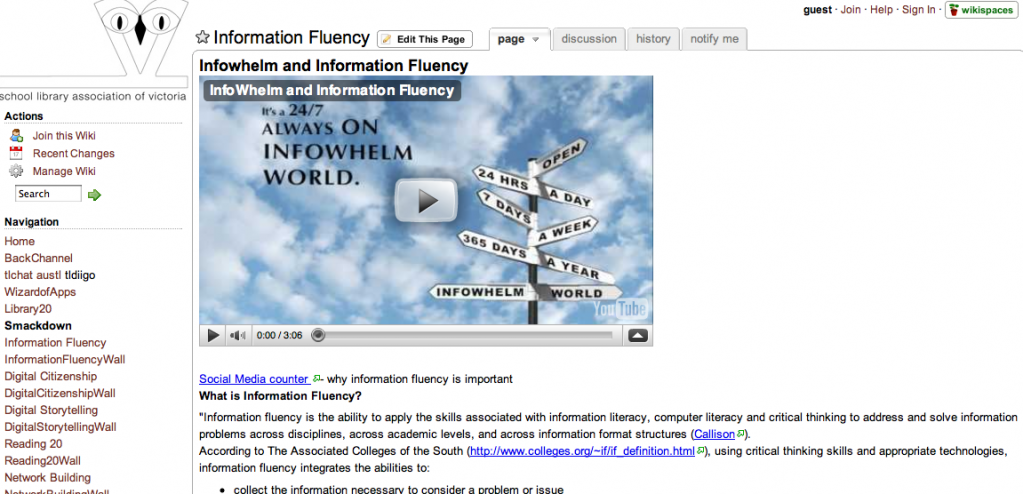The School Library Association of Victoria conference Seeing Things Differently was held on Friday 13th November at the National Gallery of Victoria. Prolific blogger and teacher librarian Lisa Hill took notes from the keynote by Dr Mark Norman, and has kindly agreed to share her notes. In Lisa’s words, “just bear in mind that as they were written ‘live’ they’re not a considered response; they’re more like notes taken in a lecture theatre than a coherent report.”
Dr Mark Norman is the author of a number of books in my school library: Birds in Suits, The Octopus’s Garden, The Great Barrier Reef, Sharks with Attitude, and Living in the Freezer and we love them all. He’s passionate about the idea of encouraging children to escape into reality, and while he acknowledges that kids are fascinated by the Lord of the Rings monsters and fantasy creatures, he thinks the natural world is intriguing for kids. He showed us some wonderful slides of deep sea animals that are ugly grotesque and gross, but they’re beautiful too.
So Dr Norman wants us to see things differently – to look around us more than we do. He’s a very entertaining speaker, and a great role model for kids becoming interested in science. He says we have to get our eye in – because sometimes we can’t see things because we’re not looking in the right way. He himself thought he had failed in his first research project on the Great Barrier Reef because he failed to see movement of camouflaged octopi.
Dr Normans’ books for kids are all based on his research but they’re not dumbed down. They’re predicated on the idea that the visual is critical to not only engaging interest but also providing information that is critical to understanding. There’s a narrative behind the photos too: he told us about one photo that took ages and ages to get because the octopus kept squirting ink to avoid the photographer. The creepy details of these creatures behaviour is of course very appealing to kids and these real stories can compete the silly stuff kids see in the popular media: the important thing is to have this information in kid friendly language.
At Black Dog books, Dr Norman learned to
- play with stereotypes
- space and place
- time
The Shark Book, Fish with Attitude: challenges the stuff about sharks being a terrible threat to humans: gentle giants like the whale shark and tiny little sharks in the deep that never get near humans. We are much more of the threat than they are to us. Koala the Real Story challenges the lack of detail about some that we think we know a lot about. Koalas have huge noses because they need to sniff out which of the leaves they eat are the least toxic. (This book is due for release soon). He adds jazzy facts to his text comparing the scale of the koala embryo and its mother to a human child and multi storey buildings. Let’s call creatures silky instead of slimy; let’s recognise the engineering feats of the house fly. (Hmm, not too sure about that one!) There are many stories to tell about these creatures…
Place and scale can be explored and you’ll find living creatures anywhere, even places that seem like sterile concrete deserts. In the inner city, planting a few native plants and the creatures will come. Get to know your local creatures and then build on that. Another new books is about the Deep, down through the different layers of our oceans, exploring the most common creatures on our planet that most people don’t know about because we can’t go deeper than 6km into the deep. These books involve complex visual literacy, including scales to show how deep the creatures are, graphics, text and striking background. Another forthcoming book explodes the myth than penguins and polar bears live together: these will be vertical books, not horizontal…
Loved his suggestion that an ovenight sleepover or a twilight activity at school can introduce children to their local creatures that only come out at night!
Interesting aso to compare the local area: the time scale at your own place during the indigenous period, and during pre human history.
Design and accessibility for weak readers includes non linear narrative, side bars, strong graphics and making information available in multiple ways. The Octopus’s Garden even includes DVDs showing film without a narration, which draws kids back to the book including the fact files in the back of the book which can be read by adults interpreting the books for children.
Kids and Climate Change: inevitable that it will affect us but Al Gore’s book was focussed on the problem and not enough on the solution. We need to give kids the idea that they are part of the solution. The narrative that’s needed will empower children so that they do what they can…
This entire presentation was given in a darkened Cleminger Theatre: it was a rivetting slideshow featuring the amazing creatures that Dr Norman talked about. This post can’t possibly convey the power of the visual images that he stressed were so important – you had to be here!
Thanks Lisa for your note taking and sharing. Great to revisit this fabulous presentation. It certainly made one think seriously about ‘seeing things differently”.


